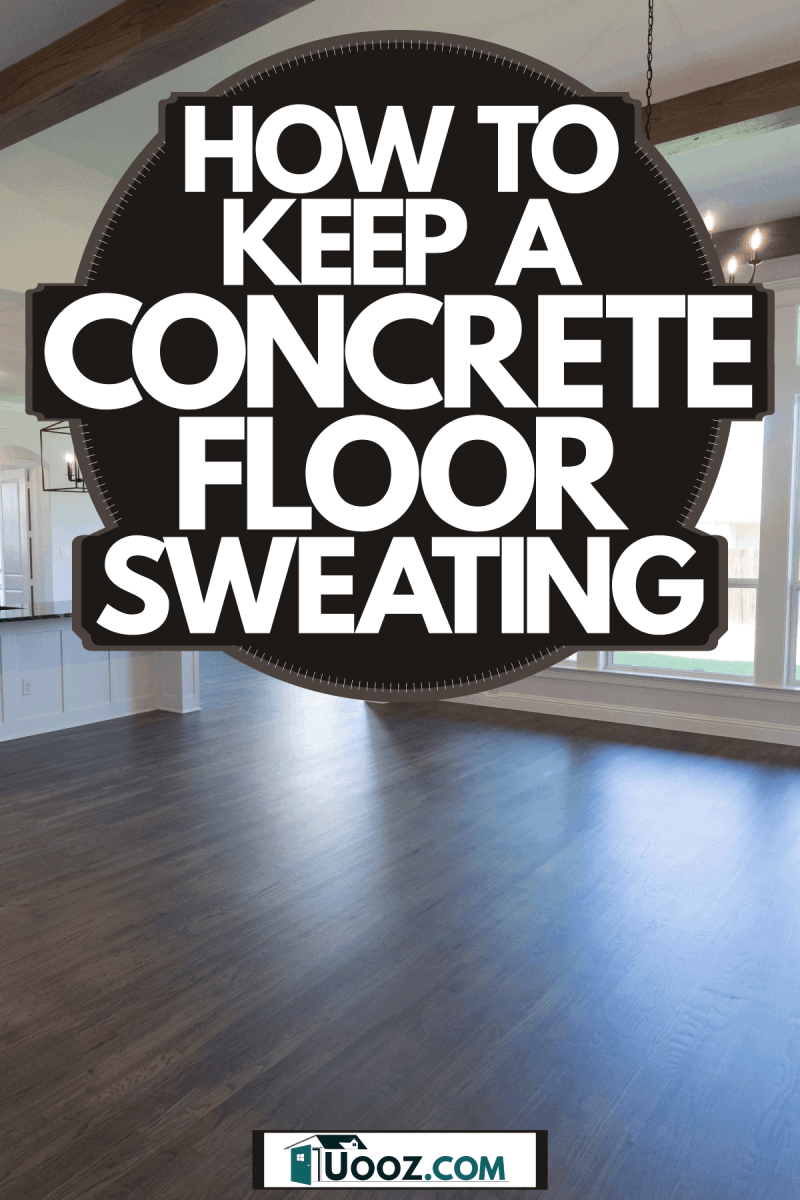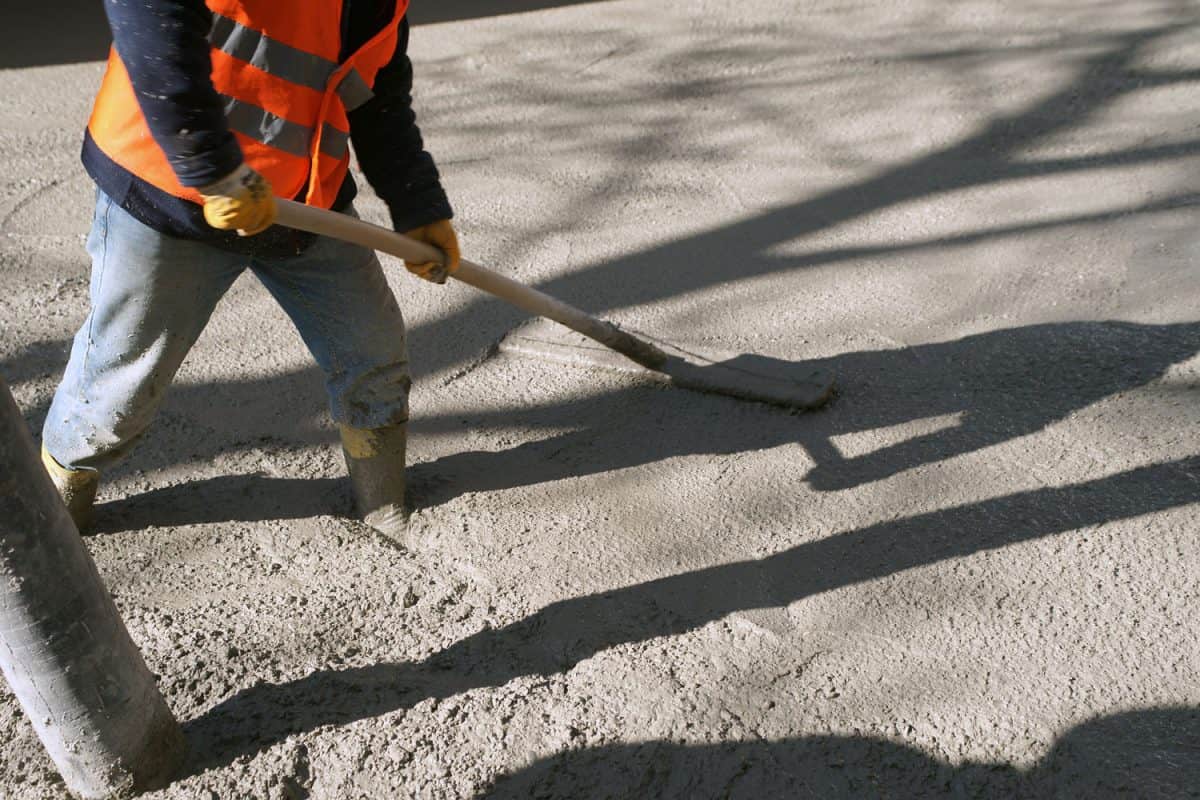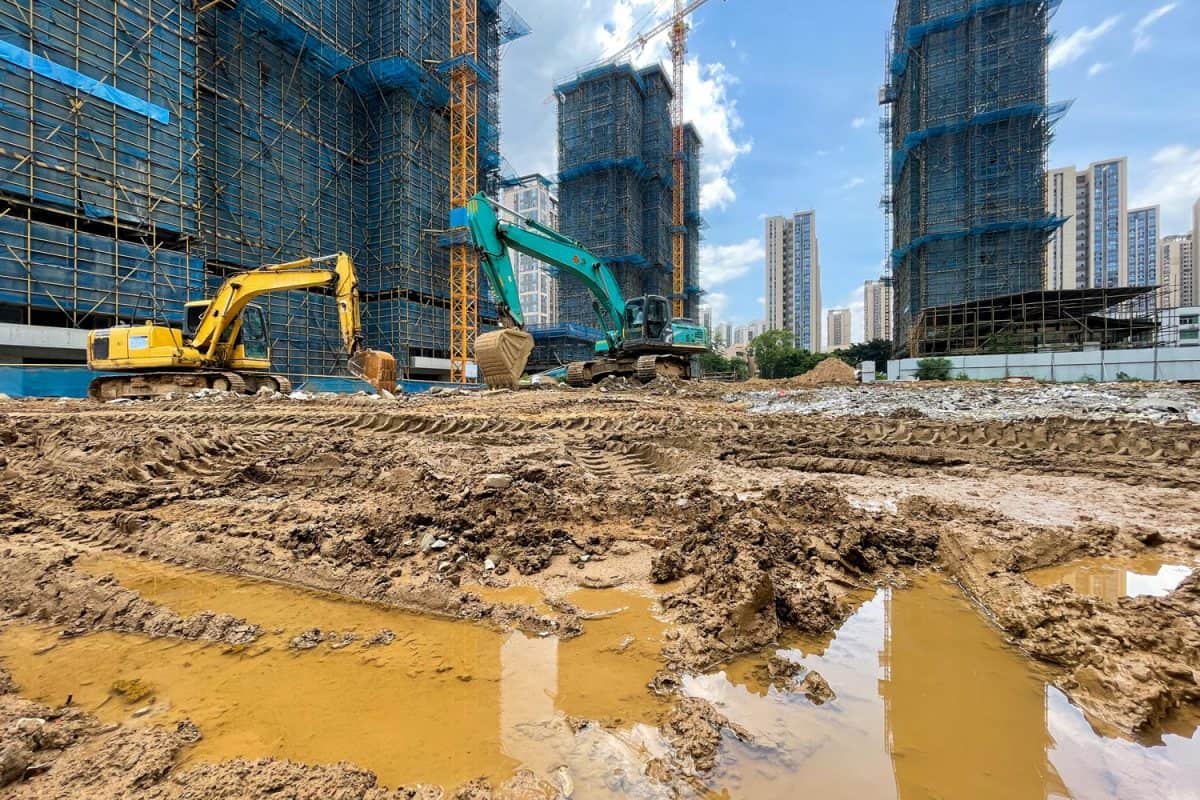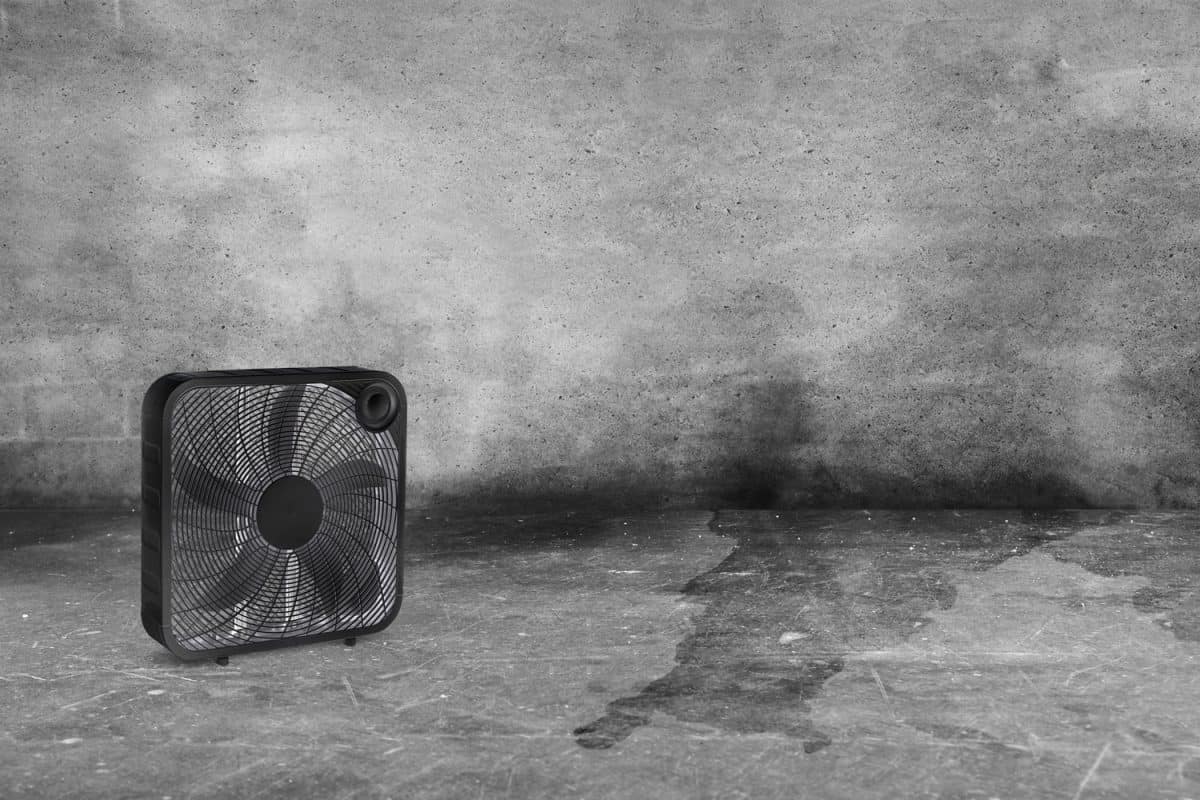Is your concrete floor sweating? Maybe you have carpet or vinyl installed over a concrete subfloor and have noticed consistent wetness. Perhaps you have not installed your floors yet, but you have heard that concrete is notorious for sweating. No matter the reason, we are here to provide the answers you need. We delved into the subject and found the best answer which is outlined below.
If you already have carpeted or vinyl floors that sweat, you can control moisture by using fans and dehumidifiers in affected rooms. If your subfloor is concrete, you should apply a leveling compound along with moisture-blocking underlayment/carpet padding before installing your vinyl or carpet flooring. Make sure the subfloor is clean, dry, and free of cracks.
There is still a lot to learn. Keep reading as we delve deeper into each preventative step and answer other questions, including why concrete sweats, if sealer prevents moisture, and if you need a moisture barrier under concrete.

How to Keep a Concrete Floor From Sweating
Whether you have a concrete floor or subfloor, sweating is a real issue. There are techniques you can utilize before laying concrete that will help lessen and possibly prevent sweating. However, if the concrete is already in place, you can use fans, temperature control, dehumidifiers, and sealants to keep moisture at bay.
Before Constructing Your Concrete Slab or Floor

Even if you do not have a concrete floor, concrete slabs can cause your floors to sweat. The following methods will help prevent moisture retention or buildup in your wet concrete as it dries:
- Concrete Surface Retarder
- Natural Drying Techniques
- Water-Free Excavation Site
1. Concrete Surface Retarder
One of the best ways to prevent moisture buildup and/or retention in your wet concrete is by using a concrete surface retarder. When concrete is left to dry, you run the risk of moisture seeping through the top. Additionally, if you do not allow all layers of your concrete to fully dry, you will deal with excessive sweating in the future.
A concrete surface retarder is a product that helps delay the setting of the surface mortar and blocks the hydration process beneath the top layer. This allows the innermost layers of the concrete to properly cure without accelerating the drying process.
You can find concrete surface retarder on Amazon.
2. Natural Drying Techniques
To avoid excessive sweating, it is important to allow your concrete to fully cure before placing carpet or vinyl. However, you should not try to speed up the drying time. Doing so could result in the inner levels of your concrete not becoming fully dry.
While concrete will appear dry within approximately 24 to 48 hours, the inside is still working its magic. Feel free to walk on your floor or slab at this point, but you will need to let the solution continue to cure for roughly 30 days before laying carpet or vinyl. If you lay flooring over concrete that has not fully cured, the moisture within will seep into your overlying floor.
3.Water-Free Excavation Site
Once your mixture has been poured and spread, keep the excavation area dry. If indoors, you can accomplish this by using a dehumidifier. For outdoor job sites, place proper coverings over the area and avoid days with predicted amounts of high precipitation.

Indoor Concrete Floors
Do you have a concrete floor in a room such as your basement or garage? You have probably noticed that it accumulates moisture. Don't panic; the kids aren't spilling water everywhere. This is a natural occurrence for concrete floors.
However, if you didn't take measures to prevent moisture before and during installation, there are some precautions you can take now to keep from having to continuously walk across wet floors:
- Fans
- Temperature Control
- Dehumidifiers
- Floor Sealant
Fans
One way to keep your concrete floors from sweating is to use a fan in the affected room. The fan will circulate air, giving it less time to accumulate on the cold floor, reducing condensation. Airflow will also help raise the temperature of the concrete quicker, making it less likely to sweat.

Temperature Control
If the affected room has a heating and cooling system, this will help greatly with wet floors. In areas without heating and cooling systems, such as unfinished basements and garages, the room can become hot and stuffy during the summer and icy cold during the winter. The concrete, on the other hand, does not maintain the same temperature as the air around it, causing moisture to form. In these areas, use fans and electric heaters to help balance temperatures.
If the room has heat and air, it will help to raise the heat during the winter and lower the air conditioning during the summer. By doing so, the concrete will have a temperature that is more balanced with that of the surrounding atmosphere, lessening condensation accumulation.
Dehumidifiers
Another proven method of preventing concrete floors from sweating is by dehumidifying the area. The higher the humidity content, the more moisture you will have. You can purchase a dehumidifier and place it in each room containing concrete floors.
You can check out dehumidifiers on Amazon.
Floor Sealant
Applying floor sealant is one of the best and most effective methods of reducing/preventing concrete sweat. This will create a barrier on top of your floor, keeping the moisture from seeping out from below. Before applying the sealant, you should thoroughly clean your floor, both sweeping and mopping. Ensure the area is completely dry before beginning the process. You should also make sure the floor is level and free of cracks and holes.
You can view floor sealant on Amazon.
Before Laying Carpet or Vinyl Flooring
If you have a concrete subfloor on which you plan to lay carpet or vinyl, now is the time to take preventative measures. Give the floor a good cleaning, allowing it to dry completely. You can seal the concrete subfloor before installing your overlay; however, you will also need moisture-resistant underlay or carpet padding. During installation, use tack strips and nails to ensure your carpet or vinyl is tightly secured.
Previously Installed Carpet or Vinyl Floors
If your carpet or vinyl is already installed over a concrete subfloor, there are still a few things you can do to help minimize sweat. The first thing step is to make sure all areas of the floor are tacked down tightly. After doing so, if your carpet/vinyl is still getting wet, it's time to take the same measures we recommended for concrete basements and garages. Adjust the temperature, circulate air using a fan, and reduce humidity with a dehumidifier.
If, after trying all these methods, your carpet is still sweating, it may be time to tear the carpet out and repair the subfloor. Yes, it is a lot of hassle, but consistently wet carpet will eventually grow mold and mildew which can make your family sick. Once you have removed the carpet and carpet glue, clean the subfloor, then level it and seal it off before replacing the carpet.
Frequently Asked Questions
How do you keep moisture from coming up in concrete?
As long as the concrete is at a different temperature than the surrounding atmosphere, moisture will continue to rise from the surface. To prevent excessive amounts of moisture, allow your concrete to cure for at least 30 days before installing floors on top of it.
How do you stop moisture under vinyl flooring?
Before you lay your carpet or vinyl, use an underlay or carpet pad with a moisture barrier. If your carpet or vinyl floors are already installed, you can resort to running fans, using dehumidifiers, and adjusting your heating and cooling systems to help maintain a balanced temperature.
What makes concrete floors sweat?
When the concrete is not the same temperature as the surrounding atmosphere, when the two collide, condensation forms on the surface. This is much like taking a cold drink from the refrigerator. When the container comes into contact with the warmer air, it becomes wet on the outside.
Does sealing concrete stop moisture?
While sealing concrete stops the moisture from reaching the surface, it does not prevent it all together. Instead, when the condensation forms, it is trapped underneath the sealant.
Do you need a moisture barrier under concrete?
While a moisture barrier is not necessarily required under the concrete, it will help prevent it from sweating in the future. Even if you opt not to place a moisture barrier under the concrete, it is imperative that you place one between the concrete subfloor and the carpet or vinyl overlying floor.
Summary
Concrete floors are notorious for sweating. However, when laying concrete, you should allow it to dry naturally, without the use of accelerants, to ensure the innermost levels become completely dry. This will prevent excessive amounts of moisture from rising to the surface.
Before laying carpet or laminate over concrete subfloors, make sure the floor is level, clean, and free of cracks, then place a moisture barrier between the subfloor and the overlying floor. If the problem persists, adjust the heating or cooling to balance the room temperature with that of the floor.
For additional advice regarding concrete floors, check out these other posts on our blog:
Can You Float a Hardwood Floor Over Concrete?



